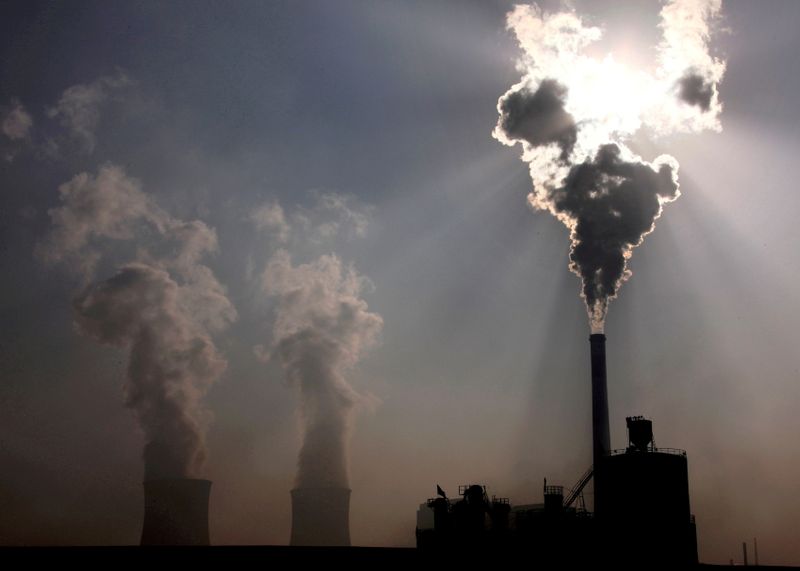BEIJING (Reuters) -Trading will commence on China’s long-awaited national carbon emissions trading scheme (ETS) later this month, the environment ministry said on Wednesday, giving an update for the launch that had been expected to take place in June.
The new ETS is part of China’s plans to make use of “market mechanisms” to help bring its carbon emissions – now the world’s highest – to a peak before 2030 and to net zero by 2060.
But the long-awaited scheme has been repeatedly delayed, partly over concerns about the transparency of emissions data, with a case exposed this month of data falsified by one power firm.
Preparation work was now “basically complete”, Zhao Yingmin, vice-minister for ecology and environment, told a news briefing.
“We will select a time to launch the national ETS and carry out the trading in July,” he added.
Although Zhao did not give an exact date for the first trade, sources with knowledge of the ministry’s plans expect a launch ceremony on Friday.
Carbon trading had been originally expected to begin before the end of June, though no reason has been given for the delay.
China expects its ETS to become the largest carbon market, by volume, in the world.
Later on Wednesday, the European Union is expected to unveil an ambitious plan to tackle climate change, including an overhaul of its ETS.
PRICE ON CARBON
The establishment in China of a nationwide trading scheme was first pledged by President Xi Jinping ahead of the signing of the Paris climate accord at the end of 2015. A “soft launch” of the scheme took place in late 2017, but no transactions took place.
China has already established seven local pilot exchanges, on which 406 million tonnes of greenhouse gas permits were traded by the middle of last year.
The first phase of the national ETS will cover more than 2,000 power plants, and will be expanded to other sectors – including cement, steel and aluminium – in due course, Zhao said, though he did not provide a precise timeline.
Zhao said emissions data accuracy was the top priority for the national carbon market. He added that the quality of the national ETS data was now generally in line with requirements, after years of data reporting and verification.
Like other carbon exchanges, China’s ETS allocates emission permits to participating firms, which they can use for their own compliance purposes or sell on the market.
However, China’s system is based on the amount of carbon produced per unit of output, rather than absolute emission levels, meaning that it is far from guaranteed that it will reduce total CO2 in the short term.
Zhao said the price on carbon at the exchange would be “hard to predict”, but noted that the average on the seven pilot exchanges stood at 40-50 yuan ($6.18-$7.72) per tonne.
“If the price is too low, it will weaken the enthusiasm of companies to reduce emissions,” he said. “Too high, and it will put too heavy a burden on high-carbon enterprises.”
($1 = 6.4754 yuan)
(Reporting by Muyu Xu and David Stanway; Editing by Clarence Fernandez, Kim Coghill & Simon Cameron-Moore)

























